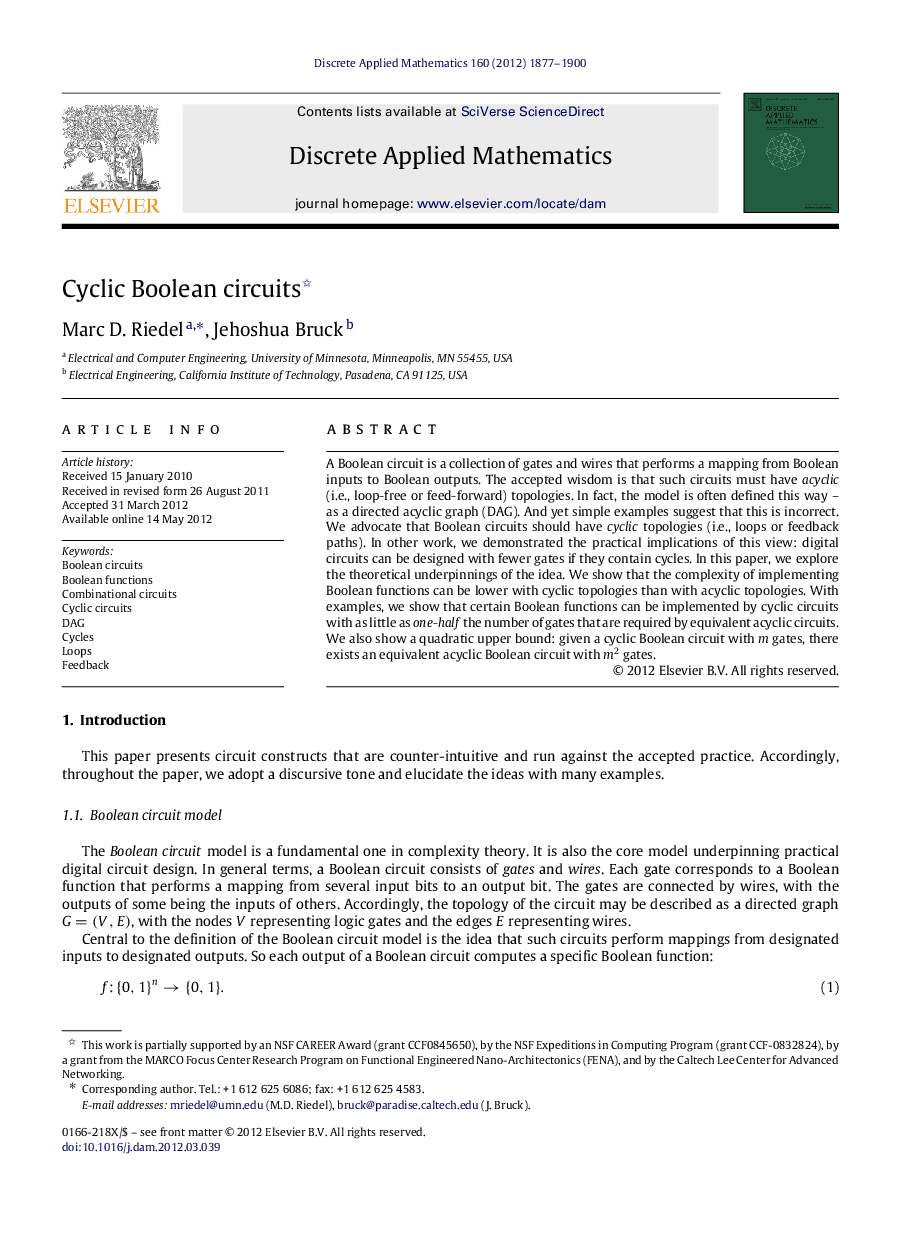| Article ID | Journal | Published Year | Pages | File Type |
|---|---|---|---|---|
| 418422 | Discrete Applied Mathematics | 2012 | 24 Pages |
A Boolean circuit is a collection of gates and wires that performs a mapping from Boolean inputs to Boolean outputs. The accepted wisdom is that such circuits must have acyclic (i.e., loop-free or feed-forward) topologies. In fact, the model is often defined this way–as a directed acyclic graph (DAG). And yet simple examples suggest that this is incorrect. We advocate that Boolean circuits should have cyclic topologies (i.e., loops or feedback paths). In other work, we demonstrated the practical implications of this view: digital circuits can be designed with fewer gates if they contain cycles. In this paper, we explore the theoretical underpinnings of the idea. We show that the complexity of implementing Boolean functions can be lower with cyclic topologies than with acyclic topologies. With examples, we show that certain Boolean functions can be implemented by cyclic circuits with as little as one-half the number of gates that are required by equivalent acyclic circuits. We also show a quadratic upper bound: given a cyclic Boolean circuit with mm gates, there exists an equivalent acyclic Boolean circuit with m2m2 gates.
